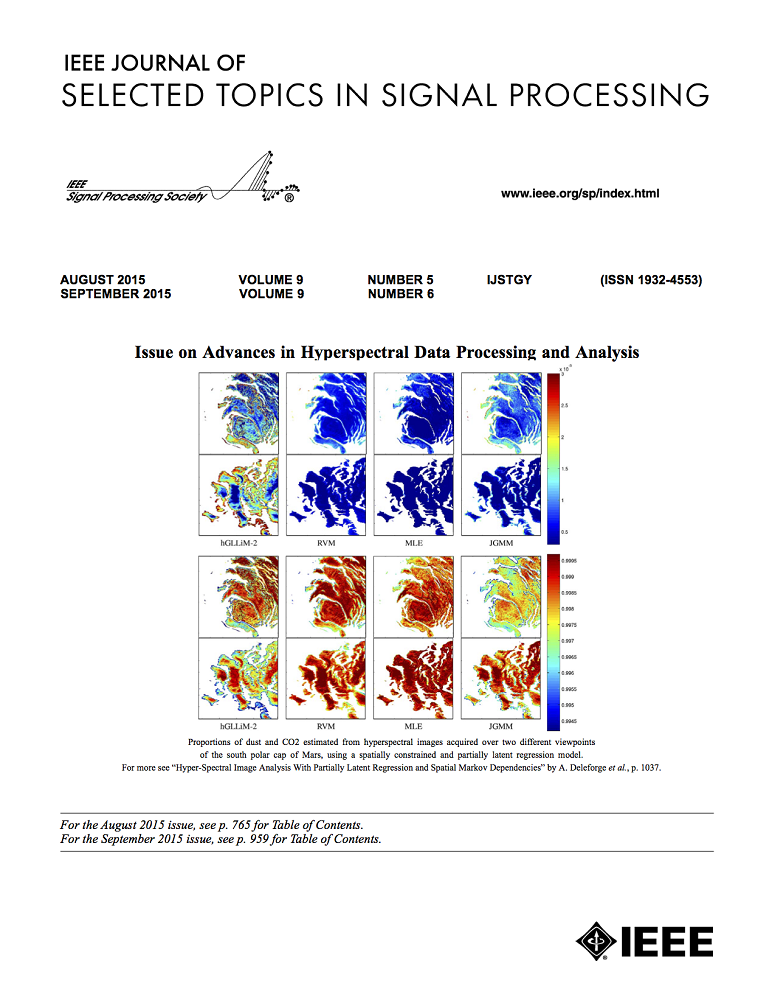Deep Learning-Based Target-to-User Association in Integrated Sensing and Communication Systems
IF 8.7
1区 工程技术
Q1 ENGINEERING, ELECTRICAL & ELECTRONIC
IEEE Journal of Selected Topics in Signal Processing
Pub Date : 2024-08-07
DOI:10.1109/JSTSP.2024.3438128
引用次数: 0
Abstract
In Integrated Sensing and Communication (ISAC) systems, matching the radar targets with communication user equipments (UEs) is functional to several communication tasks, such as proactive handover and beam prediction. In this paper, we consider a radar-assisted communication system where a base station (BS) is equipped with a multiple-input-multiple-output (MIMO) radar that has a double aim:集成传感与通信系统中基于深度学习的目标-用户关联
在集成传感与通信(ISAC)系统中,雷达目标与通信用户设备(ue)的匹配是实现主动切换和波束预测等通信任务的重要手段。在本文中,我们考虑了一种雷达辅助通信系统,其中基站(BS)配备了多输入多输出(MIMO)雷达,该雷达具有双重目标:i)在通信波束空间中将车载雷达目标与车载设备(VEs)关联起来;ii)根据雷达数据预测每个VE的波束形成矢量。拟议的目标到用户(T2U)关联包括两个阶段。首先,从距离角图像中检测车载雷达目标,并对每个目标估计波束形成矢量。然后,将推断出的每个目标波束形成矢量与BS通信中使用的波束形成矢量相匹配,以执行目标到用户(T2U)关联。通过对模拟距离角雷达图像训练的YOLO模型进行修改,实现了多目标联合探测和波束推理。不同城市车辆移动场景的仿真结果表明,T2U方法提供的正确关联概率随着BS天线阵列的大小而增加,突出了波束空间中ve的可分性分别增加。此外,我们还证明了改进的YOLO架构可以有效地进行波束预测和雷达目标检测,并且在不同天线阵列尺寸下,后者的平均平均精度具有相似的性能。
本文章由计算机程序翻译,如有差异,请以英文原文为准。
求助全文
约1分钟内获得全文
求助全文
来源期刊

IEEE Journal of Selected Topics in Signal Processing
工程技术-工程:电子与电气
CiteScore
19.00
自引率
1.30%
发文量
135
审稿时长
3 months
期刊介绍:
The IEEE Journal of Selected Topics in Signal Processing (JSTSP) focuses on the Field of Interest of the IEEE Signal Processing Society, which encompasses the theory and application of various signal processing techniques. These techniques include filtering, coding, transmitting, estimating, detecting, analyzing, recognizing, synthesizing, recording, and reproducing signals using digital or analog devices. The term "signal" covers a wide range of data types, including audio, video, speech, image, communication, geophysical, sonar, radar, medical, musical, and others.
The journal format allows for in-depth exploration of signal processing topics, enabling the Society to cover both established and emerging areas. This includes interdisciplinary fields such as biomedical engineering and language processing, as well as areas not traditionally associated with engineering.
 求助内容:
求助内容: 应助结果提醒方式:
应助结果提醒方式:


